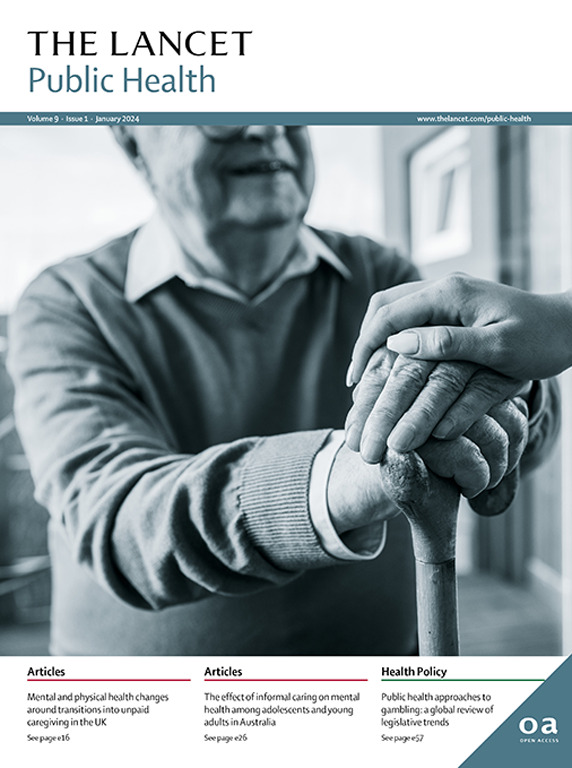强制性食盐目标:全球减盐工作的关键政策工具
IF 25.4
1区 医学
Q1 PUBLIC, ENVIRONMENTAL & OCCUPATIONAL HEALTH
引用次数: 0
摘要
大多数国家的食盐摄入量过高,全球平均食盐摄入量是建议最高摄入量(每天 5 克)的两倍多。盐摄入过量会使血压升高,是心血管疾病的主要风险因素,而心血管疾病是导致全球过早死亡和健康不良的主要原因。2013 年,世卫组织所有成员国承诺到 2025 年将平均盐摄入量减少 30%。然而,截至 2023 年,没有一个国家能够如期实现这一目标。本文章由计算机程序翻译,如有差异,请以英文原文为准。
Mandatory salt targets: a key policy tool for global salt reduction efforts
Salt is consumed in excess in most countries, with global salt intake averaging at more than double the recommended maximum limit of 5 g per day. By raising blood pressure, excess salt intake is a major risk factor for cardiovascular disease, the leading cause of premature death and ill health worldwide. In 2013, all WHO Member States committed to a 30% reduction in average salt intake by 2025. However, as of 2023, none were on track to achieve it.1
求助全文
通过发布文献求助,成功后即可免费获取论文全文。
去求助
来源期刊

Lancet Public Health
Medicine-Public Health, Environmental and Occupational Health
CiteScore
55.60
自引率
0.80%
发文量
305
审稿时长
8 weeks
期刊介绍:
The Lancet Public Health is committed to tackling the most pressing issues across all aspects of public health. We have a strong commitment to using science to improve health equity and social justice. In line with the values and vision of The Lancet, we take a broad and inclusive approach to public health and are interested in interdisciplinary research.
We publish a range of content types that can advance public health policies and outcomes. These include Articles, Review, Comment, and Correspondence. Learn more about the types of papers we publish.
 求助内容:
求助内容: 应助结果提醒方式:
应助结果提醒方式:


